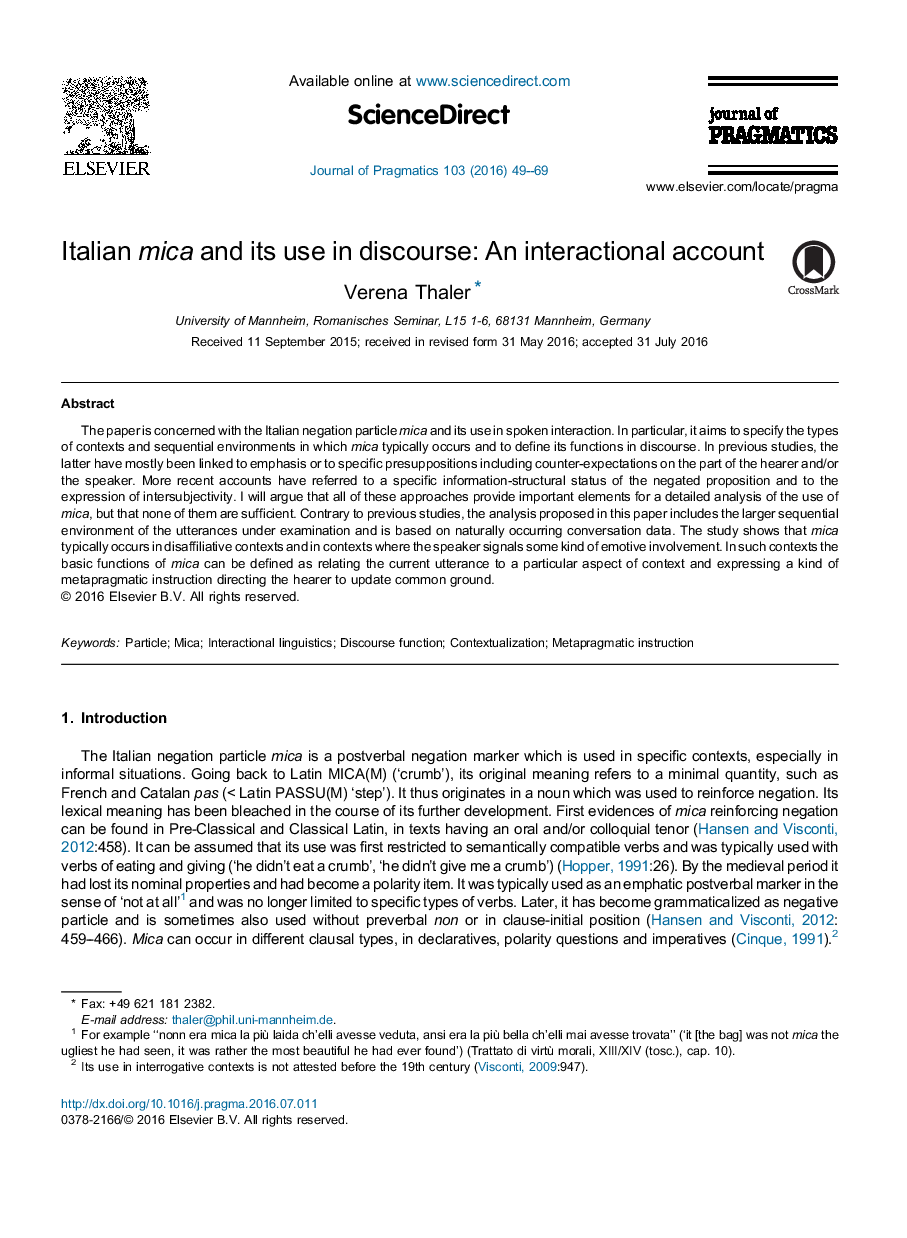| Article ID | Journal | Published Year | Pages | File Type |
|---|---|---|---|---|
| 932456 | Journal of Pragmatics | 2016 | 21 Pages |
•The paper studies the use of Italian mica in spoken interaction.•It specifies the types of contexts and sequential environments in which mica occurs.•It defines the discourse functions of mica from an interactional perspective.•Mica functions as a contextualization cue in specific sequential environments.•Mica expresses a metapragmatic instruction for the hearer to update common ground.
The paper is concerned with the Italian negation particle mica and its use in spoken interaction. In particular, it aims to specify the types of contexts and sequential environments in which mica typically occurs and to define its functions in discourse. In previous studies, the latter have mostly been linked to emphasis or to specific presuppositions including counter-expectations on the part of the hearer and/or the speaker. More recent accounts have referred to a specific information-structural status of the negated proposition and to the expression of intersubjectivity. I will argue that all of these approaches provide important elements for a detailed analysis of the use of mica, but that none of them are sufficient. Contrary to previous studies, the analysis proposed in this paper includes the larger sequential environment of the utterances under examination and is based on naturally occurring conversation data. The study shows that mica typically occurs in disaffiliative contexts and in contexts where the speaker signals some kind of emotive involvement. In such contexts the basic functions of mica can be defined as relating the current utterance to a particular aspect of context and expressing a kind of metapragmatic instruction directing the hearer to update common ground.
